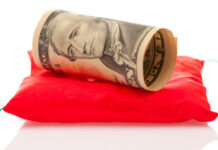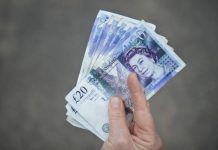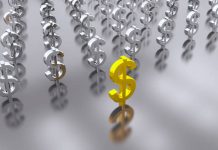Bulls in European equities didn’t’ really get washed out by the Federal Reserve (Fed) hawks; the DAX index closed higher at the wake of Powell’s first day of testimony before the Senate – which went badly hawkish on the other side of the Atlantic.
The better-than-expected jump in January industrial production in Germany may have helped send the DAX higher on Wednesday, along with a further decline in the German 10-year yield from the March peak levels.
But beyond Germany, the GDP growth in the Eurozone was null in Q4, and slowed more than expected on a yearly basis, and the European Central Bank 8ECB) won’t move a finger to boost economy because all the European policymakers want is… to abate inflation.
And the expectation is that, not only that the ECB will hike by 50bp at this month’s meeting, but there will be 150bp hike from now till summer.
The ECB hawks fueled the European yields to fresh highs since the Eurozone’s debt crisis– which is fundamentally not good news for equity traders.
And the euro is losing ground against the US dollar, as the hawks on the other side of the Atlantic Ocean look very threatening.
Even though a softer euro could be good for some businesses as a cheaper euro boosts sales abroad, it is obviously bad for abating inflation; it makes the cost of energy and raw materials more expensive for European businesses and boosts inflation. And rising inflation means higher rate hikes, and prospects of slower economy.
As a consequence, the European stocks should be more worried faced with a sinking euro and rising yields.
No decision yet
Fed Chair Jerome Powell’s second day of testimony was as hawkish as the first one, with one little exception.
Powell added a very small tweak to his Tuesday language, and said that the data will determine whether the Fed would increase the pace of the interest rate hikes, BUT that ‘no decision has been made on this’ yet.
If Powell’s intention was to cool down the 50bp hike bets yesterday, it didn’t go according to the plan. That probability went above 80% yesterday, as both the ADP report and the JOLTS data came in hotter-than-expected. The ADP printed 242K new private job additions in February versus 200K expected by analysts, while job openings in the US eased from last month’s peak, but not as much as expected.
In other words, the jobs data was again too strong to soften the Fed hawks’ hand.
The US 2-year yield extended its advance above the 5% mark, the 10-year yield hovered around the 4% level. The widening gap between the 2 and the 10-year yield boosts recession odds.
Note that the 4% mark for the US10-year yield has become a line in the sand that bond investors don’t want to breach.
The S&P500 swung between small gains and small losses yesterday, as the strong jobs data didn’t let much space for funded gains, but Powell’s ‘indecision’ about the next rate hike helped the S&P500 eke out a small gain to the end of the session.
In the FX, the US dollar index extended gains above the 100-DMA. Catch your breath before Friday!
Today, investors will mostly spend the session digesting Powell’s hawkish testimony, the major shift in US rate expectations, and the strong jobs data. They will also watch the US weekly jobless claims and pray that the February NFP print doesn’t surprise to the upside as did the ADP report.
As such, we could see some relief, and correction after two difficult days for risk assets, but investors will likely refrain from opening fresh positions before Friday’s US jobs data, because only God knows what could happen when the data falls in. Risks are two-sided, as soft data could easily spur a risk rally.
Gold and energy
The rapid surge in the US dollar and the rising US yields weigh on precious metals. Gold, which was supposed to have a great year, is now in the bearish consolidation zone, below the major 38.2% Fibonacci retracement on November to February rally, and is now testing the 100-DMA, which stands a couple of dollars above the $1800 level, to the downside. A strong data between today and Tuesday could rapidly send the price of an ounce below the $1800 mark. The next natural target for gold bears is the 200-DMA, at $1775 per ounce.
American crude on the other hand failed big time holding on to the gains above the 100-DMA and dropped nearly $5 per barrel although crude oil inventories in the US unexpectedly fell last week.
Rising recession odds due to hawkish Fed expectations is why the bears are out and selling.












